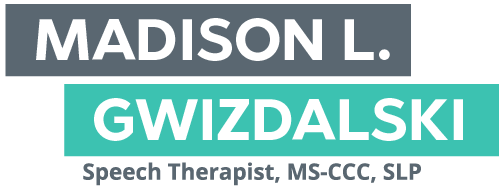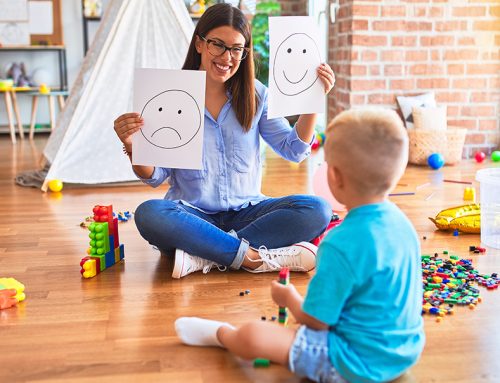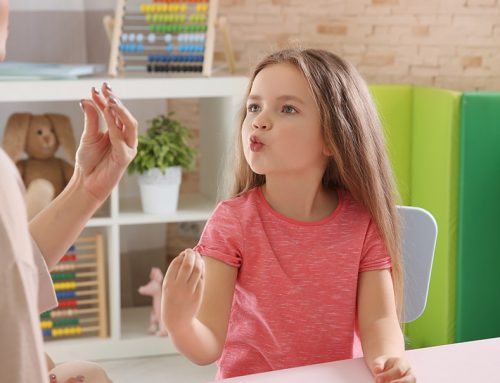
When we thinking about language development, it can be so easy to focus on expressive language. Vocabulary development, beginning to speak in 2-word phrases, and short sentences…. but language is SO much more to that. Learning language can be very difficult for children with developmental delays and disorders, especially when we focus only on the expressive portion. Laura Mize, CCC-SLP, from teachmetotalk.com, presents some wonderful information about foundational skills required prior to progressive and sustained expressive language development. Before words, we typically see children become masters at the following skills:
- Reacts to their environment: Is your child noticing the things that he sees, hears, and feels? Is he exposed to a variety of sensory experiences? If not, your child may benefit from a vision and hearing screening, as well as a psycho-developmental evaluation.
- Responds to other people when they talk or play with her: Does your child enjoy and respond to other people throughout the day? Remember, responding doesn’t necessarily start with sounds and words. It can be an action, gesture, or even a smile.
- Takes turns with others in interactions: Does your child participate in back and forth exchanges with you and other people? Will they engage in social games, such as high fives? A conversation always involves 2 or more people, and this skill sets the foundation for that!
- Develops a longer attention span: Most toddlers are able to stay with an activity for 5 minutes alone, and longer with adult help. Think about this- if you got up and walked around every 3 minutes during a movie, you would have no idea what the movie was about. Same with kids! When toddlers “stay and play” for an extended period of time, they LEARN! They are more likely to discover new things, strengthen skills, and learn how objects and people work.
- Develops joint attention: Joint attention is a critical skill that involves your child shifting his attention between an object and you, so that you are sharing the same focus. This may happen when your toddler does something with a toy, the looks at you to show you, and then resumes the activity. Why is this important? This is a social skills, and indicates that your toddler is including you!
- Plays appropriately with a variety of toys: Is your child able to play with a variety of toys and use objects appropriately in everyday routines? To learn how to play with toys and use objects appropriately means that we must observe how others are using them!
- Understands words and simple directions: Typically, a child understands much more than he can say. Make your child an active participant in everyday routines, including diapering, meal times, and bath times. Giving them little jobs, such as “give me your cup” or “get a new diaper”, not only provides them with opportunities to listen and learn, but also increases their sense of independence.
- Vocalizes and makes sounds purposefully: Does your child use a variety of noises and sounds throughout the day? Do they babble, yell, or vocalize to get your attention?
- Imitates actions, gestures, sounds, and words: We learn everything through watching and imitating others. Imitation starts way before words! Watch and see if your child is able to imitate actions with objects, such as sweeping with a broom or pretending to write.
- Uses early gestures: Does your child communicate using a variety of gestures. These include waving, pointing, lifting arms to be picked up, and so many more. In fact, gesture development is so important that it is a predictor of language development at years old. By age 16 months, a child should have 16 different gestures they use. Refer to https://www.interveningearly.org/downloads/16×16-handout.pdf for more ideas about which gestures to model!
- Initiates interactions with others: Does your child get your attention to meet her needs? For example, do they come to you to ask for a snack or to play? Remember, a conversation always requires 2 people. Targeting social skills is so important to increase communication and language development.
Wow! That’s a lot of information. No wonder learning how to communicate can be so challenging for some kiddos. Please note that these skills do not always develop in the order listed. If your child is not yet talking, take a look at if they have mastered the skills listed above. Want some ideas about how to target these skills? Check back soon for some therapy tricks and tips.


